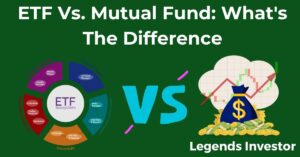Understanding Exchange-Traded Funds (ETFs): A Beginner’s Guide
Exchange-Traded Funds, commonly known as ETFs, have gained significant popularity in the investment world—but what exactly are they? Think of an ETF as a bundle of stocks or bonds combined into a single investment that you can buy or sell on the stock market. Instead of purchasing multiple assets separately, an ETF allows you to own a small portion of a diversified portfolio in one simple transaction—much like enjoying a slice of a pre-made pie instead of baking it yourself.
ETFs are not a new concept. The first ETF, designed to track the S&P 500 index, was introduced in the United States in the early 1990s. This innovation revolutionized investing by offering everyday investors an easy, cost-effective way to participate in the stock market. Since then, ETFs have expanded rapidly, covering a wide range of asset classes and market indices.
You might wonder how ETFs compare to mutual funds or individual stocks. Unlike mutual funds, which can only be bought or sold at the end of the trading day, ETFs trade on the stock exchange throughout the day, just like regular stocks. This means they offer greater flexibility and often come with lower fees. While investing in individual stocks requires careful selection to achieve diversification, ETFs simplify the process by bundling multiple securities into one. Plus, since most ETFs follow a passive management strategy, they typically have lower costs than actively managed mutual funds.
Grasping these fundamentals can help you decide if ETFs align with your financial objectives. Their combination of affordability, diversification, and ease of trading makes them a compelling choice for investors looking to expand their portfolios efficiently.
Why Invest in ETFs? Key Benefits
ETFs offer several advantages, making them an attractive option for many investors. One of the primary benefits is diversification. Investing in an ETF means your money is spread across a variety of assets, reducing the risk associated with holding a single stock or bond. This diversification can provide stability, especially during market fluctuations.
Cost efficiency is another major advantage. ETFs usually have lower expense ratios and fewer fees compared to mutual funds. Their passive management structure—where they aim to replicate an index rather than outperform it—helps keep costs low, allowing investors to retain more of their returns.
Another key benefit is tax efficiency. ETFs are structured in a way that minimizes capital gains distributions, meaning investors may owe less in taxes compared to mutual funds. This tax advantage simplifies financial planning and allows investors to keep more of their earnings over time.
With these advantages, ETFs serve as a valuable tool for building a well-rounded, cost-effective, and tax-friendly investment portfolio. Whether you’re a seasoned investor or just getting started, ETFs can help you achieve your financial goals without the burden of high fees or complex management.
How ETFs Operate: The Inner Workings
Though ETFs appear straightforward, their underlying mechanisms involve a sophisticated process that ensures seamless trading. Understanding how they function can help investors make more informed decisions.
At the core of an ETF’s operation is the creation and redemption process, which involves authorized participants—large financial institutions that facilitate ETF share supply. These participants create ETF shares by delivering a basket of underlying securities to the ETF provider. In exchange, they receive ETF shares, which can then be sold on the stock market. When investors sell ETF shares, authorized participants can redeem them for the underlying securities, maintaining a balance between supply and demand.
Market makers also play a crucial role by ensuring ETFs remain liquid. They help stabilize prices by buying and selling ETF shares throughout the day, keeping their market price aligned with the value of the underlying assets. This mechanism ensures that investors can trade ETFs whenever the market is open.
Another standout feature of ETFs is their transparency. Unlike mutual funds, which typically disclose their holdings only once per quarter, most ETFs provide daily updates on their portfolios. This level of transparency allows investors to know exactly what they are holding at any given time.
By understanding these mechanics, investors can better appreciate how ETFs operate and make informed decisions about incorporating them into their portfolios.
Different Types of ETFs: Exploring Your Options
The ETF market offers a diverse range of investment options tailored to various financial goals and strategies.
One of the most widely used types is broad market ETFs, which track major stock indices such as the S&P 500. These ETFs provide exposure to a wide range of industries, offering a balanced approach to investing in a single trade.
For those interested in specific sectors, sector and industry ETFs focus on particular areas of the economy, such as technology, healthcare, or renewable energy. These ETFs allow investors to target high-growth industries without having to select individual stocks.
Another category is thematic ETFs, which are designed around emerging trends and investment themes, such as artificial intelligence, clean energy, or cybersecurity. These ETFs enable investors to align their portfolios with long-term global trends.
Investors looking for more advanced strategies can explore leveraged and inverse ETFs. Leveraged ETFs aim to amplify returns using financial derivatives, while inverse ETFs profit when markets decline. These funds carry higher risk and are best suited for experienced investors.
With so many options available, understanding the different ETF categories is essential for selecting the right investments that align with your financial strategy and risk tolerance.
Choosing the Right ETF: Key Factors to Consider
Selecting an ETF requires more than just picking a popular fund; it involves analyzing several factors to ensure it aligns with your investment goals.
First, define your objectives. Are you seeking long-term growth, regular income, or protection against market volatility? Your investment goals should guide your ETF selection.
Next, consider liquidity and trading volume. ETFs with high trading volume generally have better liquidity, allowing investors to buy or sell shares more easily without significant price changes.
Tracking error is another important factor. This measures how closely an ETF follows its target index. A lower tracking error indicates better alignment with the index’s performance, reducing unexpected deviations.
Lastly, reviewing an ETF’s historical performance can provide insight into how it has responded to market conditions. While past performance isn’t a guarantee of future returns, it can help set expectations.
By carefully evaluating these factors, investors can make informed choices and build a well-structured ETF portfolio that supports their financial objectives.
The Role of ETFs in a Diversified Portfolio
ETFs are a versatile tool that can enhance any investment portfolio. Whether used for long-term growth, income generation, or hedging against market risks, they offer significant flexibility.
For retirement accounts, ETFs provide an efficient way to gain exposure to broad markets with minimal costs. Many investors use ETFs as a core component of their retirement portfolios due to their stability and cost-effectiveness.
Tactical asset allocation is another area where ETFs excel. Investors can quickly adjust their exposure to different sectors or asset classes based on market trends, making ETFs a valuable tool for active portfolio management.
ETFs can also serve as hedging instruments. If market downturns are a concern, bond ETFs or inverse ETFs can help offset potential losses. This allows investors to manage risk without making drastic changes to their overall strategy.
By incorporating ETFs strategically, investors can create a balanced, resilient portfolio suited to their financial needs and risk tolerance.
Risks of Investing in ETFs: What to Watch Out For
While ETFs offer many advantages, they also come with potential risks that investors should be aware of.
Market risk is a key concern, as ETFs fluctuate based on the performance of their underlying assets. Economic downturns or industry-specific challenges can impact ETF prices.
Liquidity risk is another factor to consider. While many ETFs are highly liquid, some niche funds may have lower trading volumes, making it harder to buy or sell shares at favorable prices.
Leveraged and specialty ETFs carry additional risks. These funds use complex financial strategies to amplify returns or bet against the market, leading to increased volatility. They require careful monitoring and are best suited for experienced investors.
Understanding these risks allows investors to make informed decisions and manage their ETF holdings effectively.
The Future of ETFs: Innovations and Trends
The ETF landscape continues to evolve, with new developments shaping the industry.
Active ETFs are gaining traction, blending active portfolio management with the flexibility of ETFs. These funds offer investors a more hands-on approach while maintaining cost efficiency.
Advancements in technology, such as artificial intelligence and big data analytics, are also enhancing ETF performance and tracking accuracy. These innovations are improving market efficiency and creating new investment opportunities.
Regulatory changes may also impact the ETF market. As new rules emerge, investors should stay informed about potential shifts in transparency, ESG standards, and fund operations.
With ETFs continuing to grow and innovate, staying up to date with these trends will help investors maximize their opportunities in this evolving financial landscape.



